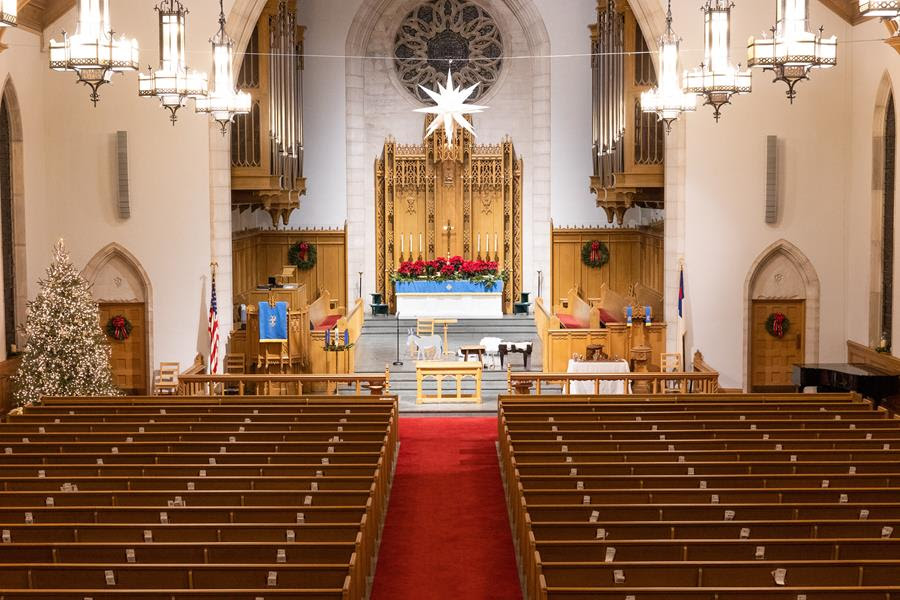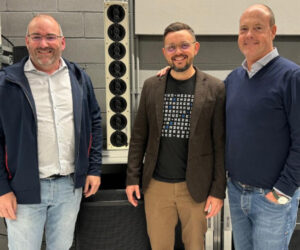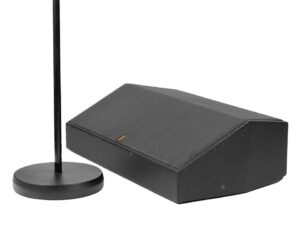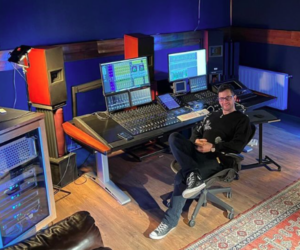Originally established over 200 years ago in Raleigh, NC, Edenton Street United Methodist Church (ESUMC) is reputed, in particular, for its pipe organ, its alluring chandelier and its stained-glass windows that dominate the sanctuary, and those elements have now been joined by a new sound reinforcement system utilizing Martin Audio O-Line compact line arrays that blends discreetly into the 27-inch thick sandstone walls.
Designed for houses of worship, the columnar loudspeaker approach was recommended and installed by local production house RMB Audio. They were as cautious in removing the venue’s old public address system, which had served the church over an astonishing seven decades.
The former system had originally been integrated within the chandelier during a rebuild following a fire in 1957. But according to RMB founder Cooper Cannady, there was now clearly a need for higher SPL and a significant upgrade in speech articulation.
Although Martin Audio’s dedicated DISPLAY prediction software indicated a 12-box design, Cannady recognized that by increasing this to 16 cabinets, driven in in two-box resolution from a pair of Martin Audio iKON iK81 multichannel amplifiers, he would not only gain both floor and balcony coverage, but be able to avoid reflections back from the balcony fascia.
“The frequency response of O-Line [85 Hz-18 kHz] in a large voluminous space such as this better reduced LF resonance,” he notes. “At the same time, the sidelobe-free close spacing of five 21 mm HF drivers ensured uninterrupted audio at the adjacent left and right pulpits, even though they are positioned slightly in front of the upstage O-Line hangs. This is what often creates the problem with other systems, where you can’t have the speech articulation you want because of the proximity of the mics.”
Explaining this further, he adds, “Within 12 to 15 feet of the arrays is a lectern and with celebrants on Lavaliers or head mics and they are able to walk in front of the O-Line without any problems with feedback whatsoever. For human articulation, O-Line is always the ‘go to’ solution.”
The challenges extended well beyond the thickness of the walls. Installation of the O-Line wall bracket required stonemasons with knowledge to drill into the walls for threaded rod fitting. As for the cabling, several 500-foot reels were required to accommodate viable flow paths for the difficult runs behind the scenes, particularly around the pipe organ.
Dave Clemmer, ESUMC audio steward (and long-time collaborator with RMB Audio), emphasized the task of “crawling around pipe organ lofts with hundreds of feet of signal cable runs—through 27-inch thick walls, concrete and existing empty conduit.” As such, he said, a new rule of thumb was established on this project: “measure four times, drill once”.
However, the RMB Audio tech team were already familiar with the facility prior to installation, having frequently augmented the church’s productions by bringing in Martin Audio CDD12 or CDD15 for worship services featuring a full band. “Now with O-Line they can replicate what we were doing for them earlier,” explains Cannady.
CDD had initially looked like being the preferred option until RMB Audio’s owner showed photos of other chapels where they had been outfitted with O-Line “and they thought they looked fantastic.” Provision of a demo pack enabled the neutral light grey to be color-matched and gain the architects’ approval. Positing that O-Line was also “the most forgiving cabinet in the Martin Audio series” proved to be the icing on the cake.
Clemmer agrees: “This installation took over a year of gathering acoustic measurement, before settling on O-Line with its audio spectrum quality and artistic design.”
Reflecting on an installation that respects the heritage of the building, Cannady says that due to the forgiving nature of O-Line virtually no tuning was needed, despite sound swirling round a high elevation ceiling. “The room is very settled because with so much stained glass, the ceiling vault starts so high up the wall. We were fortunate in that respect, as were that not the case, it could easily have introduced reflections elsewhere. For very cavernous, large volume buildings where you have resonances there is nothing better than O-Line, as it naturally has a presentation that works well.”





















